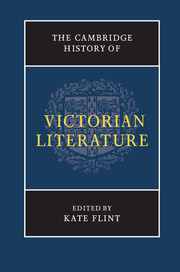Book contents
- Frontmatter
- Introduction
- PART I AUTHORS, READERS, AND PUBLISHERS
- PART II WRITING VICTORIA’s ENGLAND
- PART III MODES OF WRITING
- PART IV MATTERS OF DEBATE
- PART V SPACES OF WRITING
- 27 Spaces of the nineteenth-century novel
- 28 National and regional literatures
- 29 Britain and Europe
- 30 Victorian empire
- 31 Writing about America
- PART VI VICTORIAN AFTERLIVES
- Select bibliography
- Index
27 - Spaces of the nineteenth-century novel
from PART V - SPACES OF WRITING
Published online by Cambridge University Press: 28 March 2012
- Frontmatter
- Introduction
- PART I AUTHORS, READERS, AND PUBLISHERS
- PART II WRITING VICTORIA’s ENGLAND
- PART III MODES OF WRITING
- PART IV MATTERS OF DEBATE
- PART V SPACES OF WRITING
- 27 Spaces of the nineteenth-century novel
- 28 National and regional literatures
- 29 Britain and Europe
- 30 Victorian empire
- 31 Writing about America
- PART VI VICTORIAN AFTERLIVES
- Select bibliography
- Index
Summary
Everyday life takes the space of our three-dimensional world for granted. Length, breadth, and depth, as the elements of our spatial consciousness and the medium of social experience, are so much a part of existence that they can be ignored. When they are encountered in the novel, they can also be passed over as one of the necessary and relatively unimportant obligations of realism. Yet in a novel, as Bakhtin realized, ‘Time, as it were, thickens, takes on flesh, becomes artistically visible; likewise, space becomes charged and responsive to the movements of time, plot and history.’ How then does a writer convince us through the abstractions of language that spatial experience created in a text is, by an extraordinary transposition, recognizable, vivid, a lived experience? How, in other words, does the novelist effect a mimesis of the a priori of space? This is the problem I address here. With the category of space uppermost, the ‘thickening’ of space in the novel, and the ways that it creates inter-spatial consciousness and social interaction, can be opened up.
Subtract the element of space from the nineteenth-century novel and it would be hard to say what is left. Most models of the novel, though, while they admit the indivisibility of space and time, begin with time. The criticism of Mikhail Bakhtin and Paul Ricoeur offers outstanding examples of this. To begin with space: this would mean reversing the historical poetics of the chronotope, Bakhtin’s term for narrative elements where time and space mutually intensify and become dynamic.
- Type
- Chapter
- Information
- The Cambridge History of Victorian Literature , pp. 573 - 597Publisher: Cambridge University PressPrint publication year: 2012
- 1
- Cited by



